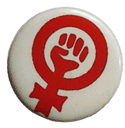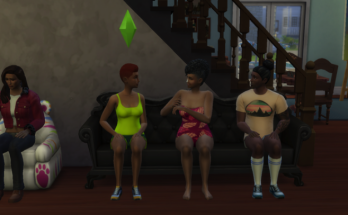By Gina Magnuson for Feminist Online Spaces
Sam Cronk began his lecture with a recording by the 1960s singer is Pete Seger. The
song is a form of protest music that dates back to 1912 called “Which Side are You On,?”
a tune that was inspired by a miner’s strike who sought unionization. Using Madison as
the primary focus of his study, Cronk informed the audience of the thousands of people
responding to the state’s austerity bill. His piece touched on the convergence of music,
politics, and social media, using digital technologies while asking the questions: how do
musicians assess their experience, what does it reveal about creativity and what does it
mean to be human?
Musical performance or artistic expression is rarely highlighted by scholars. Musicians
become commodities via celebrity culture, marketing, and commodification. Marshall
McLuhan, a communications analyst, is one of Cronk’s main individuals of study.
McLuhan’s words still remain true today: “all media technologies work us over
completely” and the media is “the message mess age massage mass age.” No form of
media is ever entirely abandoned as it is a technological extension of our physical bodies,
sometimes constricting humans, other times expanding our point of view. Cronk notes
how humans are completely immersed in mass media, often times forgetting how
mediated our experiences are. All media are constructions and we have to acknowledge
biases, motivations, and strengths of texts. We must remember that media literacy is an
ongoing process.
Reporting on a sing-along protest group in Wisconsin called The Learning Curve, Cronk
provides us with the appeal of a sing-along protest: it maintains a kind of collective
energy that raises peoples spirits and helps build community. Five days a week these,
sing-alongs occur at the State Capitol. At least ten people bring cell phones to every
event in order to archive and project these moments and, thus, social media becomes
another extension of the physical voice. It’s more than a protest its a combination of
community strengthening and strengthening of resolve rather than simply pushing back.
In recent weeks these protests have been targeted by arrests and have been limited from
having public gatherings at the state capitol, and although the group has not advocated
violence in any way, the state has passed a complete ban of wearing shirts simply
saying “Solidarity Sing-Alongs.” Since the arrests have taken place, The Learning
Curve’s numbers have doubled. Digital technologies like Facebook are essential for
organizing, recruiting new members, raising public awareness, allowing for the group’s
betterment via the sharing of legal and social gathering information to encourage local
support.
Cronk concludes his talk with four final points:
1. Folk music is recycled and repurposed as events occur.
2. Social media does not automatically imply youth media the average age of the
solidarity sing along is 64.
3. Internet advocacy moves faster than news channels.
4. It’s necessary to have a media that presents and encourages diverse points of view in
public debate.
These musicians see themselves as information journalists raising awareness about
happenings. Although social media are essential for sustaining stability of these groups
they are not stable in themselves. We can view their constructions as a utopian ideal
unaware of corporate structures behind social media.

